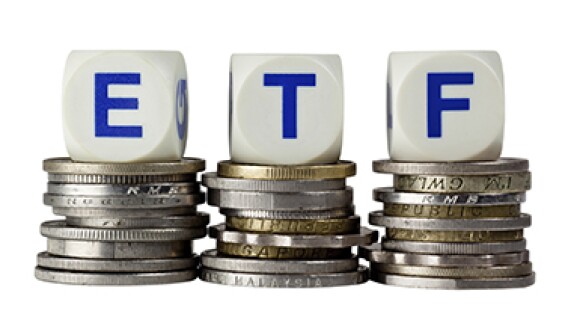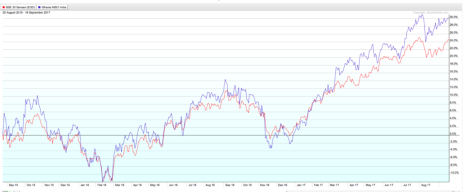India is becoming an increasingly attractive investment opportunity. Its gross domestic product (GDP) expanded 5.6% last quarter. With 1.28 billion people and a fertility rate of 2.45 kids per household, it’s on the cusp of surpassing China (1.39 billion people, fertility rate of 1.6) as the world’s most populous country. And yet for all its people, there aren’t many Indian stocks to invest in on U.S. exchanges. The good news is, there’s an India ETF you can buy to gain more wide-ranging exposure to India’s surging stock market.
It’s called the iShares MSCI India ETF (INDA). The INDA tracks the price of Indian stocks that aren’t listed on U.S. exchanges. And with a mere 10 Indian ADRs (American Depositary Receipts), that’s a lot of stocks that you can’t otherwise buy outside the Bombay Stock Exchange.
As our resident emerging markets investing expert Paul Goodwin explained at last week’s Cabot Wealth Summit, the reason there are only 10 Indian stocks available on U.S. exchanges is because the Indian stock market is so robust.
[text_ad use_post='129628']
“Indian companies don’t need U.S. exchanges for anything aside from prestige,” Paul said.
Compare the number of India ADRs to number of Chinese ADRs (85), and it’s pretty slim pickings. And that’s too bad, given the run-up in Indian stocks of late.
The Bombay Stock Exchange is up 21.7% so far this year, nearly double the 11.9% rally in the S&P 500. The INDA, however, has actually outpaced the Indian stock market: it’s up 28.4% in 2017. And the INDA has been outpacing Indian stocks as a whole for quite some time. Take a look at this two-year chart. The India ETF is the purple line.
That’s a pretty good trend!
Now, there are plenty of Indian stocks that are performing even better than the INDA—in some cases much better. In fact, several of those stocks are available on U.S. exchanges: five of the 10 Indian ADRs are outpacing the INDA so far this year.
Not coincidentally, Paul Goodwin currently holds two of those five outperforming Indian ADRs in his 10-stock Cabot Global Stocks Explorer (formerly Cabot Emerging Markets Investor) portfolio. Year to date, each of those two Indian stocks is up more than 60%—more than double the return in the INDA!
So, if you want exposure to the fastest-growing nation in the world, and an economy with a GDP growth rate (7.4%) that has outpaced China’s (6.9%) over the last 10 quarters, you can either invest in this fast-growing India ETF, or, for even greater gains, you could take out a subscription to Paul’s Cabot Global Stocks Explorer advisory and discover the two Indian stocks that are growing even faster.
To do the latter, click here.
Either way, if you’re an emerging markets investor, India is becoming impossible to ignore. Amid the huge run-up in the Chinese stock market this year, it’s easy to focus mostly on Chinese stocks when investing in emerging markets these days. But there are opportunities to profit from India too—just not many of them on U.S. exchanges.
[author_ad]



